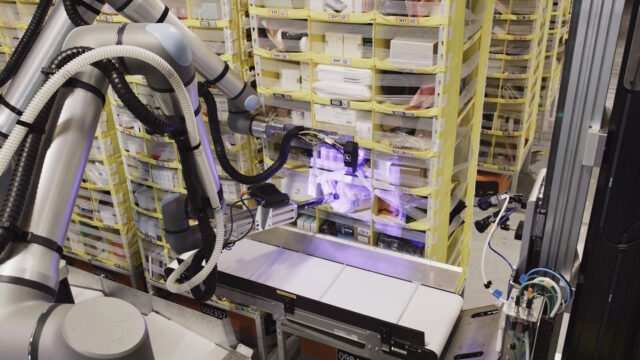Amazon unveils Vulcan, a package sorting, AI-powered robot with a sense of touch

The meeting of artificial intelligence and robotics almost unavoidably conjures up images akin to the Terminator -- but with Vulcan, Amazon has something different in mind.
Moving away from the traditional “numb and dumb” robot, Vulcan is described as a “fundamental leap forward in robotics”. Designed for used in its fulfillment centers, this is Amazon’s first robot with a sense of touch.
See also:
- Microsoft has finally relented and is giving Windows 11 users the new Start menu they want
- Microsoft now has AI agents that can change Windows 11 settings -- should we be delighted or terrified?
- Microsoft says the Windows 11 24H2 is ready for everyone... except for those that it's not
Launching today at Amazon’s “Delivering the Future” event in Dortmund, Germany, Vulcan is revolutionary. Aaron Parness, Amazon director of applied science says that the industrial robot is “not just seeing the world, it's feeling it, enabling capabilities that were impossible for Amazon robots until now”.
Amazon says that Vulcan is built on key advances in robotics, engineering, and physical AI and it is helping to not only speed up operations, but also makes working conditions safer for workers. The company points to traditional robots’ lack of awareness:
In the past, when industrial robots have unexpected contact, they either emergency stop or smash through that contact. They often don’t even know they have hit something because they cannot sense it.
Vulcan helps to bridge the gap between humans and robots, bringing greater dexterity to the devices. The system is able to identify objects, and knows how to handle them appropriately:
Vulcan can easily manipulate objects within those compartments to make room for whatever it’s stowing, because it knows when it makes contact and how much force it’s applying and can stop short of doing any damage.
Vulcan does this using an “end of arm tooling” that resembles a ruler stuck onto a hair straightener, plus force feedback sensors that tell it how hard it’s pushing or how firmly it’s holding something, so it can stay below the point at which it risks doing damage.
Robots already play a role in the completion of 75 percent of Amazon orders, and Vulcan fills the ability gap of previous generations.
Explaining a little about how the robots work, Amazon says:
It also required the novel application of physical AI, including algorithms for identifying which items Vulcan can or can’t handle, finding space within bins, identifying tubes of toothpaste and boxes of paper clips, and much more. And we couldn’t just teach Vulcan with computer simulations, but trained its AI on physical data that incorporates touch and force feedback. It tackled thousands of real-world examples, from picking up socks to moving fragile electronics.
Vulcan even learns from its own failures, figuring out how different objects behave when touched and steadily building up an understanding of the physical world, just like kids do. So, you can expect it to become smarter and more capable in the years to come.
Vulcan is due to roll out for sites across the US and Europe over the next couple of years.
